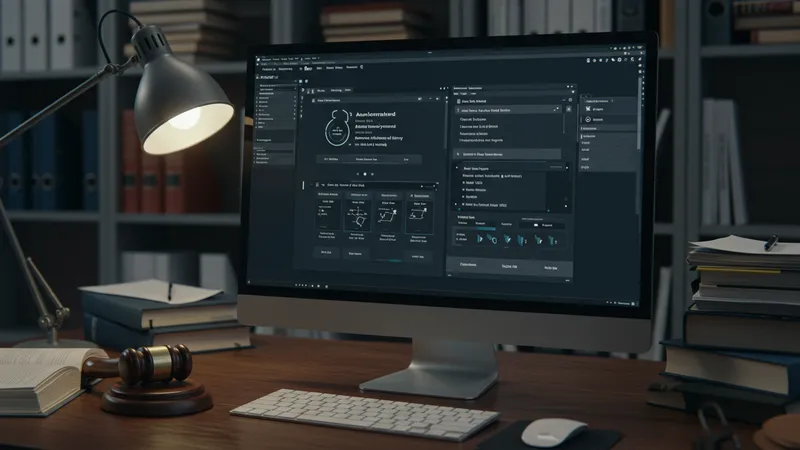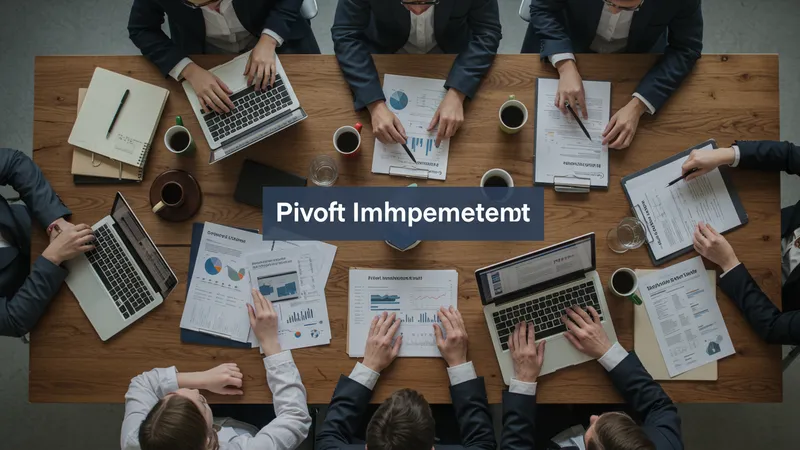Did you know? A revolutionary legal software solution has been quietly saving law firms thousands of dollars each month. But here’s the kicker: most law firms are still oblivious to its potential.
In the digital age, where speed and efficiency reign supreme, leveraging the right legal software is more essential than ever before. With increasing competition and client demands, law firms that don't adapt might find themselves left in the dust.

Surprisingly, not all legal software is designed solely for large practices. Many solutions cater specifically to smaller firms, offering surprising benefits that can level the playing field. These tools don’t just streamline workflow; they redefine how legal professionals interact with technology. But that’s not even the wildest part…
Here's a jaw-dropping fact: the most popular legal practice management tools today might not even be the best for your firm! Many organizations are making costly mistakes by choosing popular names without considering their unique needs. Imagine realizing you’ve been buying the wrong software year after year. But the surprises don’t end there…
What happens next shocked even the experts. Could the next innovation completely overturn current industry practices? Keep reading to discover game-changing insights that every law firm should know.
When law firms consider adopting new software, initial costs are often the primary concern. However, the true expense lies in what isn’t immediately visible. Subscriptions come with hidden fees for customization and user training, which can greatly exceed the expected budget. Over time, these fees pile up, creating financial strain that catches many firms off guard, yet surprisingly, no one talks about it.

The real concern is the cost of poor decision-making around software selection. Firms sometimes rush into choices based solely on recommendations without determining their unique requirements first. This often leads to investing in solutions that don’t align with their workflows, impacting efficiency negatively. But there’s a twist…
Many software providers offer incentives that seem too good to be true, like extended free trials or discount periods. However, these are often designed to entice firms while glossing over the hefty costs that kick in once the trial ends. The reality? Once firms commit, they are left navigating complex pricing structures. But the biggest eye-opener is yet to come…
Unbeknownst to many, a select few firms have strategically avoided these pitfalls by adopting a gradual integration approach. This allows them to test efficacy and cost-effectiveness without fully committing upfront. As a result, they avoid unnecessary expenses. What you read next might change how you see this forever.
Among the sea of legal software solutions, certain features can dramatically enhance a firm’s operational efficiency. One standout feature is automated document generation, allowing attorneys to draft tedious documents in minutes, a task that previously consumed hours. This not only saves time but also minimizes human error — a crucial advantage in the high-stakes legal world.

Time tracking integrations are another underrated powerhouse. They provide precise timing data that empowers firms to bill clients accurately, eradicating infamous billing disputes. As time tracking seamlessly coincides with billing software, firms witness a boost in financial transparency and client trust. But there’s one more twist…
Features like case management and collaboration tools are allowing law firms to revolutionize how they engage with clients and handle caseloads. Real-time data access ensures better-informed counsel, turning advisors into strategic partners rather than mere service providers. This new dynamic holds vast potential. Yet, what experts have uncovered next might be the true game-changer…
Predictive analytics is rapidly gaining traction among forward-thinking firms, acting as a way to turn data into actionable insights. This technology predicts case outcomes based on historical data, refining decision-making processes and client advisories. The implications of this are profound, carving out a new frontier in legal services.
Despite the abundance of legal software solutions, not all firms capitalize on their full potential. One secret insider tip is to focus on integrating software across various functions of the firm. Aligning billing systems with document management or client communication tools can drive unprecedented synchronization, efficiency, and client satisfaction.

The learning curve can be steep, but here’s an insider’s scoop: leveraging vendor training and support extensively can bridge gaps swiftly. Many firms underutilize these resources, leaving capabilities undiscovered or misunderstood. Don’t underestimate training — it’s a game changer that maximizes ROI. But what’s often kept quiet...
Data migration is another critical area where firms frequently stumble. Poor migration leads to data inconsistencies that can jeopardize client information integrity. Meticulous planning and involving seasoned experts during migration can safeguard against data loss, ensuring a seamless transition. Believe it or not, the solution is simpler than many realize…
Finally, regularly updating the software is paramount. Regular updates not only patch security vulnerabilities but often include new features that keep the software on the cutting edge. Firms overlooking updates may be missing out on tools that could further amplify productivity and client service. What’s coming next could redefine the landscape.
As technology continues to evolve, artificial intelligence is poised to revolutionize legal software. By automating routine tasks that once required hours of manual work, AI is expected to free up valuable time for legal professionals, allowing them to focus on complex, high-stakes tasks that demand human intuition and expertise.

The integration of AI in legal software opens doors to predictive analysis, where outcomes are anticipated based on historical data. This can significantly influence case strategies and client advisories, positioning firms that leverage AI as leaders in innovative legal practices. Yet, the developments are far from what most experts imagined…
Another intriguing future prospect is the use of AI for continuous learning. Imagine a system that learns from past cases, improving its accuracy and decision-making prowess over time. This could manifest as more refined case recommendations and risk assessments, fundamentally altering how legal counsel is offered. But even this is just the tip of the iceberg…
Robust data protection mechanisms powered by AI are also expected to advance. With cyber threats consistently on the rise, AI provides a layer of security that could insulate sensitive legal data more effectively than current protocols. What lies ahead is promising but also sparks a discourse on balancing innovation with ethical concerns.
Selecting the right legal software solution requires a strategic approach. Start by compiling a comprehensive list of the firm’s needs and objectives to ensure that the selected software aligns with the essential tasks. Conduct thorough research on various offerings and scrutinize user feedback to understand common satisfaction points and pitfalls.

Next, consider starting with a pilot program. Testing software on a small scale allows for direct assessment of usability and functionality within the real-world operations of the firm. This step is crucial as it offers firsthand insight into performance without committing large-scale resources prematurely. One overlooked aspect remains…
Negotiating terms with software vendors can unlock hidden discounts or customizable solutions tailored to the firm’s specific situation. Businesses should not shy away from exploring flexibility in service level agreements and pricing. Surprisingly, this collaborative negotiation often leads to better terms than those initially advertised by the provider.
Finally, constantly reevaluate your software needs. The requirements of the firm will evolve, and so should its tools. Regularly assessing the firm’s workflows and challenges ensures that software remains a solution, not a setback. This proactive mindset lays the foundation for sustainable progress. And just when you think you've settled, a seismic shift might occur…
A firm’s success doesn’t solely hinge on software; it also relies heavily on how tech-savvy its personnel are. Encouraging ongoing education and training can foster a culture where technology is embraced rather than resisted. As employees grow more comfortable with software, the firm reaps benefits through enhanced productivity and morale.

Law firms could incentivize innovation by acknowledging creative uses of technology within the firm. Such initiatives can spark enthusiasm and drive meaningful engagement with the software among employees. However, the most interesting development is about culture itself…
Transparency in technology discussions can lead to valuable feedback and new efficiencies. By involving staff in decision-making processes around technology use and improvements, firms align operational goals with workforce expectations. This collaborative approach builds trust and loyalty, often leading to unexpected innovations and improvements.
Ultimately, as technology becomes more integral to all facets of operation, adapting to it becomes not merely an option but a necessity. Companies that foster a dynamic and responsive technological culture often find themselves leading rather than following industry trends. Yet, how this culture is nurtured requires skill and foresight.
The shift to remote work has unveiled potential previously thought impossible for law firms. With the help of modern software solutions, lawyers are now able to manage cases from anywhere, without the confines of a traditional office. This flexibility has enabled firms to maintain operations seamlessly amid global disruptions.

Comprehensive software that integrates with cloud technology allows team members to collaborate in real-time, no matter where they are located, increasing both productivity and client responsiveness. The convenience and adaptability of this setup cannot be overstated. But here comes an unexpected realization…
Remote work has also introduced new challenges, particularly concerning communication. Firm leaders must now focus on choosing ideal software solutions for virtual meetings and secure communication channels to maintain engagement and protect sensitive information. Firms that master this aspect can thrive in a digital-first world.
Moreover, the pace of adaptation to remote work and the digital tools that enable it can become a competitive advantage if approached strategically. Firms willing to pave the way forward by investing in robust remote work infrastructure might discover an unforeseen level of efficiency and employee satisfaction.
Change management is pivotal when it comes to implementing new legal software within a firm. The transition process can create anxiety; however, a methodical approach can ease such concerns. Planning a phased rollout enables firms to test the waters and adjust accordingly without overwhelming the workflow.

Communication during software upgrades or changeovers is crucial to maintaining all stakeholders' trust and patience. Transparent dialogue about the changes ahead and how they serve firm objectives can foster receptivity and confidence. Trust-building is more important than many assume in this stage because…
Involving IT professionals and other internal champions in the early stages ensures that technical expertise is available when needed, smoothing the transition. Cross-functional teams can predict potential issues before they disrupt operations, thus preemptively protecting productivity.
Ultimately, a strategic approach to change management aids in embedding new systems seamlessly into daily routines, minimizing disruptions. Firms that master this skillset not only save on costs but also position themselves well for future changes, as they arise inevitably with technological advancement.
While many law firms focus on singular software solutions, a real competitive edge emerges through synergy among diversified tools working cohesively. Integrating case management solutions with billing and client communication platforms creates a unified system that acts like a well-oiled machine. Firms that spot this quickly gain ground.

This synergy eliminates data silos, ensuring information flows freely across departments, which enhances decision-making speed and accuracy. Meeting client concerns comprehensively with a synchronized system tightens the attorney-client relationship, amplifying satisfaction. But this isn’t all there is to consider…
Customizing integrations specific to firm operations is advantageous. Software providers are often more accommodating in creating tailored solutions than firms might realize. Custom solutions often provide superior results and avoid the one-size-fits-all trap that limits capability.
An unexpected benefit of software synergy is improved analytical capability. Unified data access allows firms to discover insights previously hidden in fragmented datasets, unlocking opportunities for strategy optimization and innovation. It may be time to redefine the role data plays in your firm.
With the rise of legal software solutions, new ethical considerations have surfaced. Concerns around data privacy and the confidentiality of sensitive case information are paramount. Choosing software with robust security protocols is imperative to ensure compliance with legal standards and protect client data.

Firms must also consider the ethical implications of decision-making powered by AI and analytics. It’s important to strike a balance between data-driven insights and the human judgment that safeguards ethical practices. But there is more than initially meets the eye in this complex landscape…
Transacting with vendors that align with firm values can preempt potential ethical conflicts. Ensuring that suppliers come with transparent business practices and a commitment to privacy regulations is just one way to uphold ethical standards in technology usage.
As technology continues to evolve, staying informed and responsive to new ethical considerations will be critical. Ethical frameworks need to keep pace with technology to preserve trust and professional standards within the legal sector. Preparing for these challenges now will pave the way for sustainable growth.
Global trends suggest that the evolution of legal software will continue to influence practice models worldwide. One observable shift is the growing preference for mobile-friendly solutions, which reflect an increasing tendency towards on-the-go consultation and case management.

Sustainability also appears on the horizon as a significant trend guiding development. Software platforms helping to minimize paper use and maximize digital processes are pulling ahead. However, sustainability requires tearing down internal barriers, which is no small feat…
Additionally, globalization requires platforms that can handle a range of jurisdictional variations. Legal software that accommodates multiple legal frameworks is invaluable for firms operating across borders, signaling growth potential. This international adaptability enables exceptional client service.
Emerging markets are contributing to demand as well, as legal services become more accessible and necessary in previously underserved regions. Meeting this demand will require innovative thinking and strategic partnerships to deliver scalable solutions. The future of legal software reflects a borderless approach, aligning tools with a nuanced understanding of the global landscape.
Numerous case studies demonstrate how law firms have harnessed software solutions to revolutionize their operations. One mid-size firm, for example, successfully used case management software to reduce time spent on administrative tasks by 40%, reallocating resources to client services and revenue-generating activities.

A small firm that implemented integrated billing and time-tracking software realized a 25% increase in annual revenue by charging more accurately and reducing unbilled time. Such transformations showcase the tangible returns from intentional software investment. But there’s a lesson in the pattern…
Larger firms often use software to improve collaboration across multiple offices. By leveraging communication platforms, these firms alleviate locational barriers, resulting in seamless teamwork and a unified firm culture. The resulting improvements in efficiency are noteworthy and offer inspiration.
Adopting cutting-edge tools with the mindset of continuous improvement and willingness to recalibrate processes sets a firm on the path to success. These case studies highlight how a strategic approach to software adoption can drive both short-term and long-term growth, inspiring a new era of legal practice.
The process of implementing legal software is fraught with potential pitfalls, but adhering to time-tested dos and don’ts can guide firms toward successful outcomes. Starting with pilot implementations or incremental rollouts is a smart move, allowing for adjustments based on initial feedback and mitigating resource strain.

Avoiding broad, one-size-fits-all solutions helps maintain focus on finding tools that specifically meet the firm’s unique needs. Tailoring choices ensures that the software directly supports rather than complicates firm processes, setting the stage for a harmonious integration.
Don’t underestimate the importance of post-implementation evaluations. Regularly assessing the software's impact helps tune progress and refine workflows. Firms that neglect ongoing assessments risk missing evolving concerns that could snowball into larger issues.
Above all, embrace change as an opportunity rather than a hurdle. Enthusiastically leveraging technological advancements enhances a firm's competitive edge, ensuring that the latest tools are employed to their fullest potential. Consulting professionals can enhance this transition, and a firm commitment to improvement seals success.
The journey through the world of legal software has brought unforeseen transformations that reshape how legal work is conducted. From realizing hidden efficiencies to pioneering new approaches to service delivery, legal software is a catalyst for change and progress.

One crucial takeaway is the importance of staying informed and proactive. Legal environments are rapidly evolving, and firms that embrace technological sophistication with a strategic eye stand to gain significantly. Ignoring these shifts invites obsolescence.
The challenge lies in balancing the pursuit of innovative solutions with an unwavering commitment to ethics and client satisfaction. The potential for transformative change is immense, opening doors to possibilities that redefine traditional legal practice.
As you explore these possibilities, consider preparing for the future by integrating cutting-edge legal technologies into everyday practices. Sharing this knowledge with peers and engaging in continuous learning will fortify your firm against the storms of change and position it as a trailblazer for others to follow.